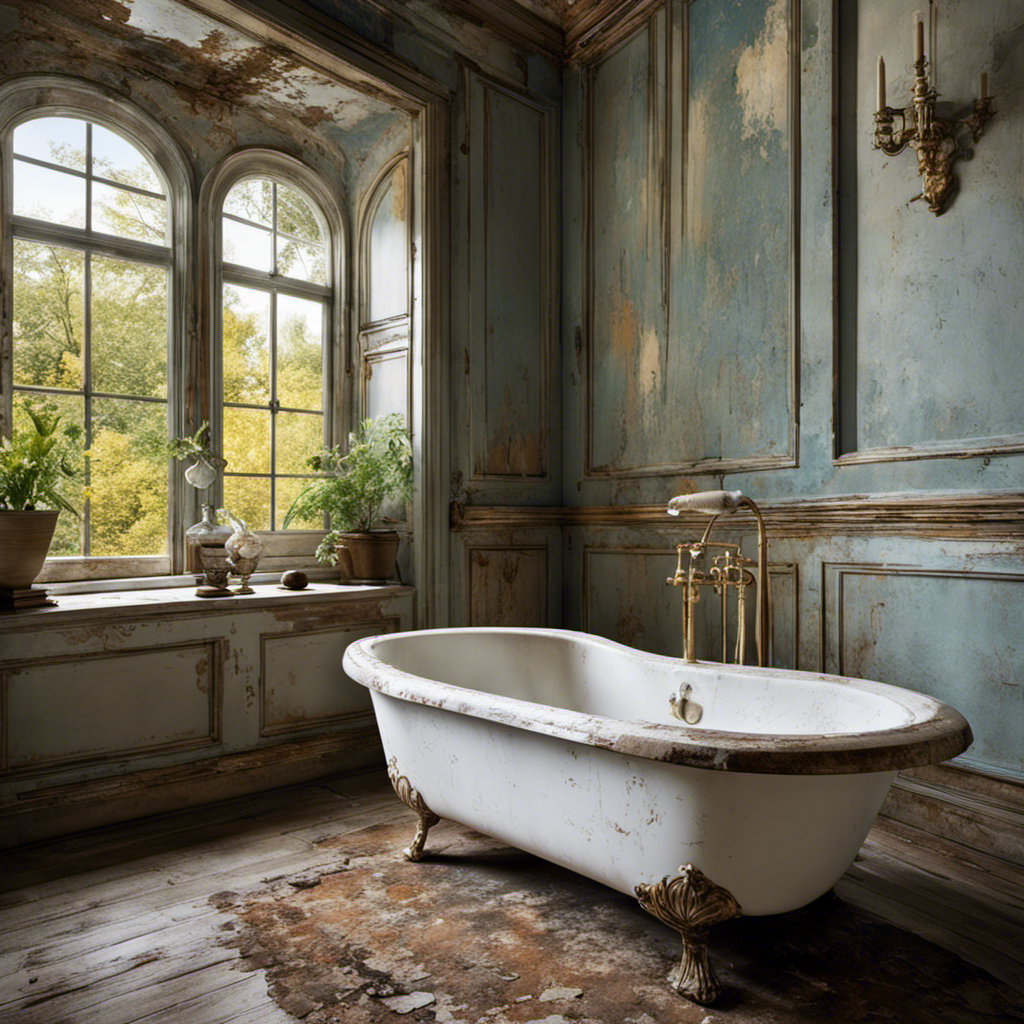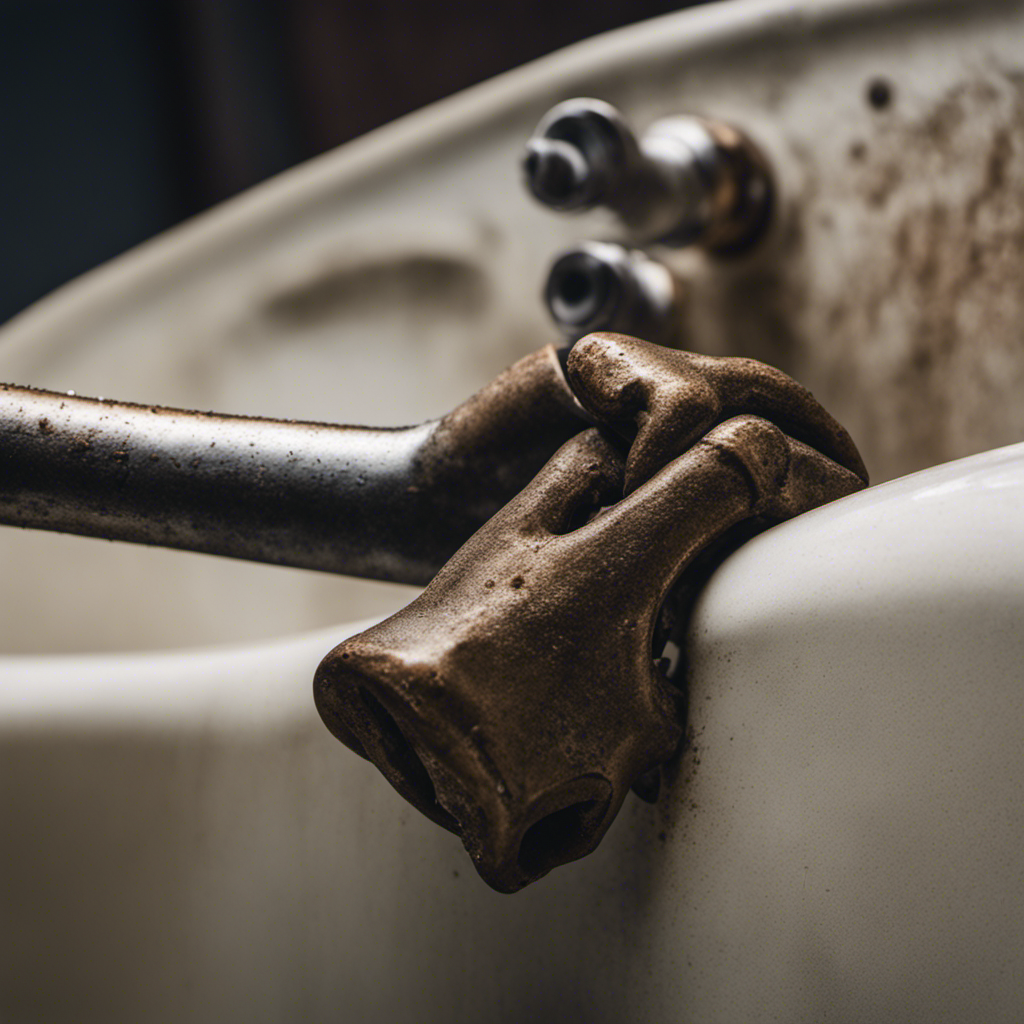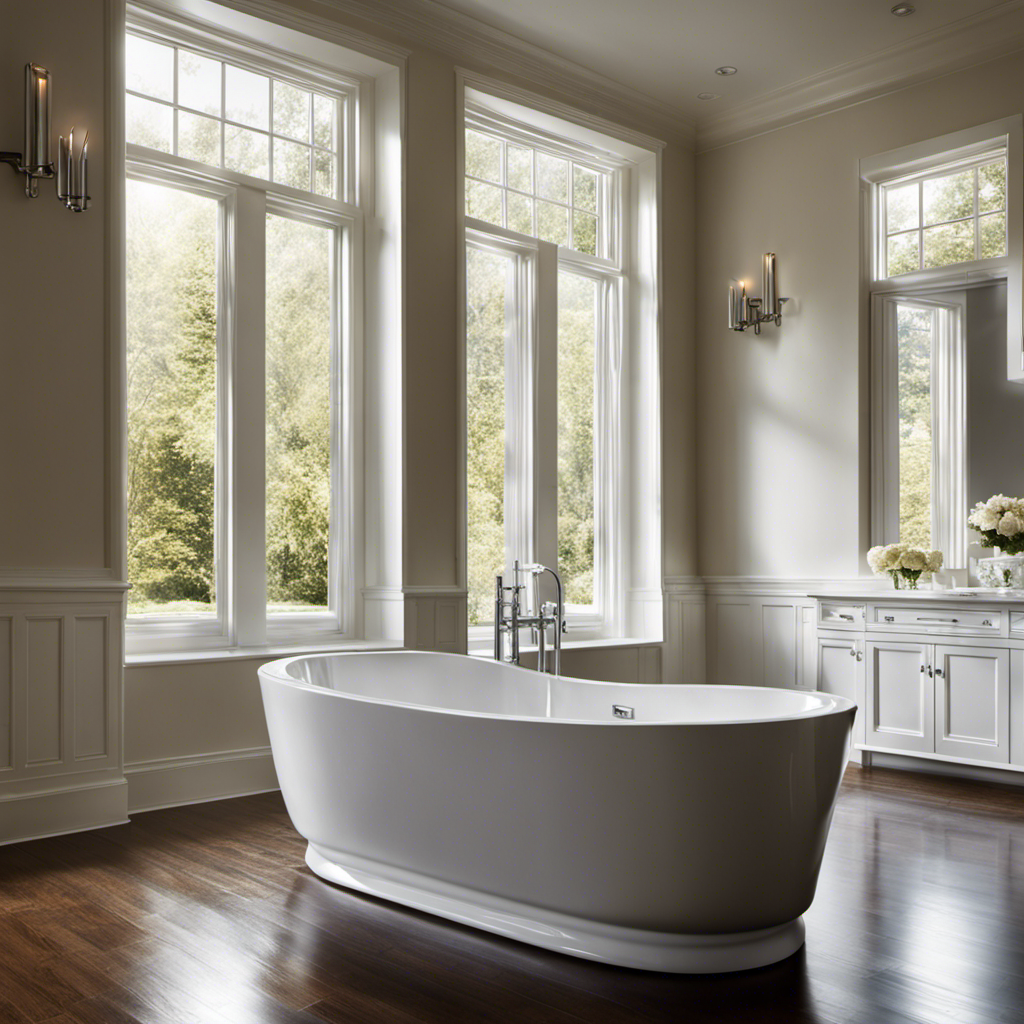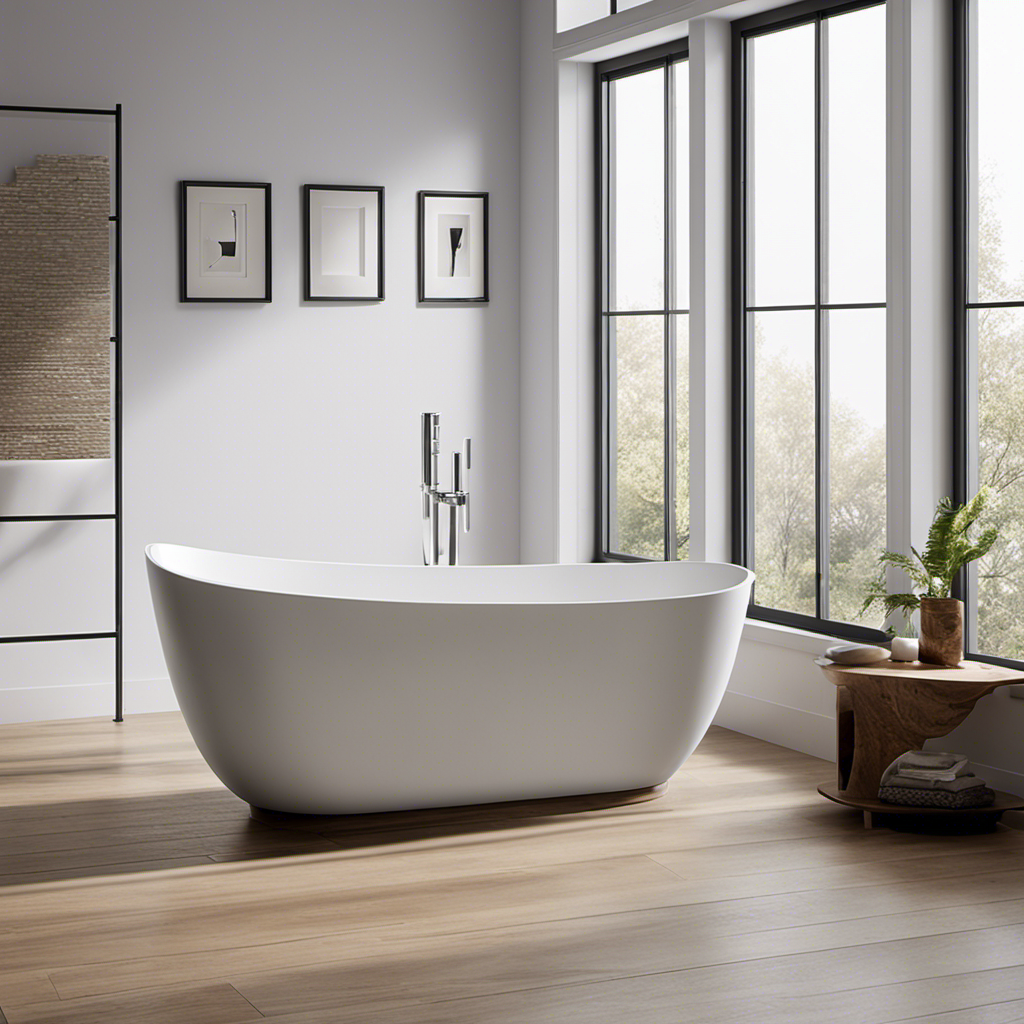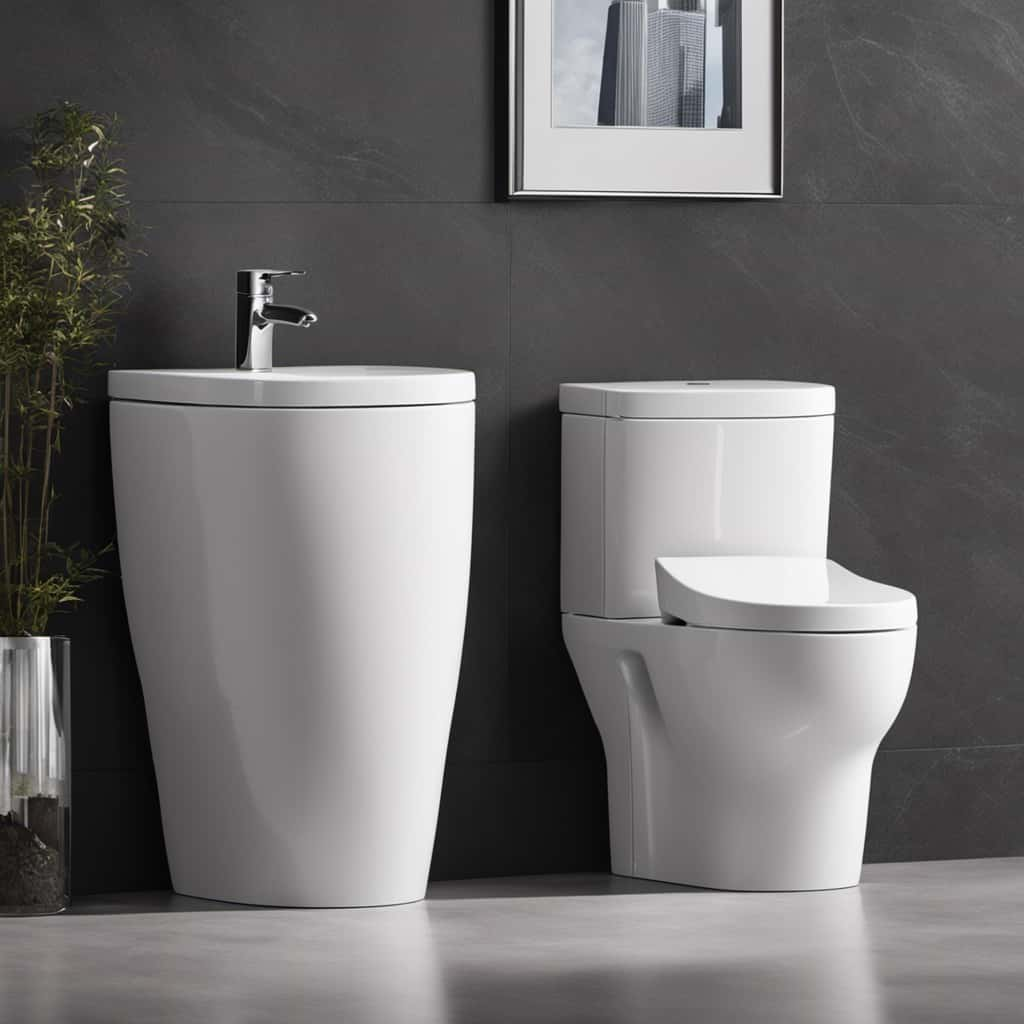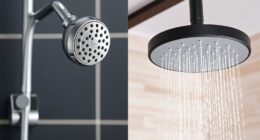Did you know that the average bathtub holds around 40 to 60 gallons of water? Understanding the capacity of your bathtub is essential for a variety of reasons, from water conservation to ensuring a comfortable bathing experience.
In this article, I will provide you with all the information you need to determine how many gallons your bathtub can hold. From understanding bathtub measurements to calculating volume and exploring different types of designs, we will cover it all.
So, let’s dive in and discover the fascinating world of bathtub capacities!
Key Takeaways
- The average bathtub holds around 40-60 gallons of water.
- Bathtubs come in various sizes, ranging from small to large.
- Bathtub dimensions include length, width, and depth.
- Factors such as bathtub material, shape, depth, and size determine the amount of water a bathtub can hold.
Average Bathtub Size and Capacity
The average bathtub holds around 40-60 gallons of water. Understanding bathtub dimensions is crucial when choosing the right bathtub size for your needs.
Bathtubs come in various sizes, ranging from small to large, to accommodate different preferences and bathroom spaces. The dimensions of a bathtub include length, width, and depth.
It is important to consider the dimensions of your bathroom and the available space before selecting a bathtub size. A larger bathtub may provide a more luxurious bathing experience, but it may not fit well in a smaller bathroom. On the other hand, a smaller bathtub may be more suitable for a compact bathroom but may not offer as much comfort.
It is essential to strike a balance between your desired bathtub size and the available space in your bathroom.
Understanding Bathtub Measurements
To understand how much water your tub can hold, you should familiarize yourself with bathtub measurements.
When it comes to choosing a bathtub, there are various material options available, such as acrylic, fiberglass, cast iron, and porcelain-enameled steel. Each material has its own benefits and drawbacks, so it’s important to consider factors like durability, maintenance, and cost before making a decision.
Additionally, the bathtub installation process is a crucial step in ensuring that your tub is properly installed and functions as intended. This process typically involves measuring and preparing the space, connecting the plumbing, and securing the tub in place. It’s recommended to consult a professional plumber or contractor to ensure a smooth and successful installation.
Calculating Bathtub Volume in Gallons
Calculating a bathtub’s volume can be done by measuring its length, width, and depth. To convert the volume to gallons, you can use a simple formula. The average bathtub size is around 60 inches long, 30 inches wide, and 15 inches deep. To calculate the volume in gallons, follow these steps:
- Measure the length, width, and depth of your bathtub in inches.
- Multiply the three measurements together to get the volume in cubic inches.
- Convert the cubic inches to gallons by dividing the volume by 231.
Here’s a table illustrating the calculation for a typical bathtub:
| Length (in) | Width (in) | Depth (in) | Volume (gal) |
|---|---|---|---|
| 60 | 30 | 15 | 44.82 |
Factors Affecting Bathtub Capacity
Factors that can affect the capacity of a bathtub include its shape, depth, and size. When considering the capacity of a bathtub, several factors come into play. These factors can greatly impact the amount of water the bathtub can hold. Here are some key points to consider:
- Bathtub material options: Different materials, such as acrylic, porcelain, or fiberglass, can affect the overall capacity of the bathtub.
- Impact of bathtub shape on capacity: The shape of the bathtub, whether it is rectangular, oval, or corner-shaped, can determine how much water it can hold.
- Depth and size: Naturally, the deeper and larger the bathtub, the more water it can accommodate.
Understanding these factors is crucial when choosing a bathtub that suits your needs. In the subsequent section, we will explore different types of bathtub designs and capacities.
Different Types of Bathtub Designs and Capacities
When it comes to bathtubs, there is a wide range of sizes available, each with its own unique water holding capacity.
Understanding the variations in bathtub sizes is essential for selecting the right one that meets your specific needs.
In this discussion, we will explore the different types of bathtub designs and their corresponding water holding capacities to help you make an informed decision.
Bathtub Size Variations
To determine the size of a bathtub, you can simply measure the length and width of your tub. This will give you the dimensions you need to know for selecting the right bathtub for your bathroom. When it comes to bathtub size variations, there are a few key factors to consider.
- Bathtub materials: Different materials, such as acrylic, fiberglass, and cast iron, can affect the size and weight of the bathtub.
- Bathtub installation: The size of your bathroom and the available space will determine the maximum size of bathtub that can be installed.
- Personal preference: Some people prefer a larger bathtub for a more luxurious bathing experience, while others may prefer a smaller bathtub to save space.
Considering these factors will help you choose the perfect bathtub size for your needs. Now, let’s move on to discussing the water holding capacity of bathtubs.
Water Holding Capacity
The water capacity of a bathtub varies depending on its size and materials used. It is important to know the capacity of your bathtub in order to measure your water consumption accurately and ensure proper bathtub maintenance.
The capacity of a bathtub is measured in gallons, which is the standard unit for liquid volume. By knowing the gallon capacity of your bathtub, you can estimate the amount of water needed to fill it and adjust your water usage accordingly. This information is crucial for conserving water and reducing your overall water consumption.
To measure your bathtub’s gallon capacity, there are simple steps you can follow. By understanding the capacity of your bathtub, you can make informed decisions about how much water you use and take steps towards water conservation.
Now, let’s explore how to measure your bathtub’s gallon capacity.
How to Measure Your Bathtub’s Gallon Capacity
When it comes to accurately measuring the gallon capacity of a bathtub, there are a few key points to consider.
First and foremost, it’s crucial to ensure that the measurements are precise and accurate, as even a slight deviation can lead to miscalculations.
Additionally, factors such as the shape, depth, and slope of the bathtub can also affect its gallon capacity, making it essential to take these factors into account during the measurement process.
Accurate Bathtub Measurement
You can easily measure the capacity of a bathtub by using a measuring cup and a bucket. To ensure bathtub measurement accuracy and achieve a precise gallon capacity estimation, follow these steps:
- Fill the bathtub with water until it reaches the overflow level.
- Using the measuring cup, carefully scoop out water from the bathtub and pour it into the bucket.
- Repeat this process until the bathtub is empty, making sure to measure and record the amount of water in the bucket each time.
By following these steps, you can calculate the precise gallon capacity of your bathtub.
However, it’s important to note that there are several factors affecting gallon capacity, which we will explore in the next section. Understanding these factors will give you a more comprehensive understanding of your bathtub’s true capacity.
Factors Affecting Gallon Capacity
Factors such as water depth, bathtub shape, and person size can affect the capacity of a bathtub. The materials used in the construction of the bathtub can also play a role in determining its gallon capacity. Different materials have different thicknesses and densities, which can impact the overall volume of the bathtub. For example, acrylic bathtubs tend to have a larger capacity compared to cast iron bathtubs due to their lighter weight and thinner walls. Additionally, the bathtub installation process can also affect its capacity. Improper installation can lead to uneven surfaces and gaps, which can cause water to leak and reduce the effective capacity of the bathtub. It is important to consider these factors when choosing a bathtub to ensure it meets your needs in terms of size and water capacity.
| Bathtub Material | Gallon Capacity |
|---|---|
| Acrylic | 50-70 gallons |
| Cast Iron | 40-60 gallons |
| Fiberglass | 30-50 gallons |
| Porcelain | 40-60 gallons |
Estimating Water Usage for Bathtub Filling
To estimate how much water your bathtub holds, try filling it up with a bucket and counting the number of trips you make to the faucet. This method allows you to determine the approximate capacity of your bathtub in gallons.
When it comes to estimating water usage for bathtub filling, it’s essential to consider water-saving techniques. Here are three tips to help conserve water while filling your bathtub:
- Install a low-flow faucet or aerator to reduce water flow without compromising on pressure.
- Consider taking shorter showers instead of filling the bathtub every time.
- Utilize a bathtub water diverter valve to recycle the water you use for bathing plants or flushing toilets.
Tips for Conserving Water While Using a Bathtub
Installing a low-flow faucet or aerator can help reduce water flow while maintaining pressure when using a bathtub. These water saving techniques are essential for eco-friendly bathing methods. By using a low-flow faucet or aerator, water consumption can be significantly reduced without compromising the bathing experience. These devices work by restricting the flow of water, ensuring that less water is used while still providing adequate pressure.
Additionally, it is important to be mindful of water usage while bathing. Taking shorter showers and filling the bathtub only halfway can further conserve water. Implementing these eco-friendly bathing methods not only helps to preserve our precious water resources, but also reduces water bills and promotes sustainable living.
Frequently Asked Questions
Are There Any Safety Precautions I Should Take When Filling up a Bathtub?
When filling up a bathtub, it is important to take safety precautions to prevent accidents. Some bathtub safety tips include using a non-slip mat, setting the water temperature at a safe level, and never leaving a child unattended.
Can I Use a Bathtub for Other Purposes Besides Bathing?
Yes, a bathtub can be used for various purposes besides bathing. Some alternative uses for bathtubs include using them as a planter, a small pond, or even a unique piece of furniture. It all depends on your creativity and preference.
How Long Does It Usually Take to Fill up a Bathtub With Water?
On average, it takes about 15-20 minutes to fill up a bathtub with water. The filling time can be influenced by factors such as water pressure, size of the bathtub, and the volume of water needed.
What Are Some Common Materials Used to Make Bathtubs?
Enamel and fiberglass are common materials used for bathtubs. They provide durability and resistance to stains and scratches. These materials are popular due to their ease of maintenance and long-lasting qualities.
Are There Any Regulations or Guidelines Regarding the Maximum Capacity of a Bathtub?
There are regulations and guidelines that dictate the maximum capacity of a bathtub. These regulations ensure the safety and comfort of users. It is important to adhere to these guidelines when determining the capacity of a bathtub.
Conclusion
In conclusion, understanding the gallon capacity of your bathtub is essential for maximizing your bathing experience. By measuring your bathtub’s dimensions and using the appropriate formula, you can easily calculate its volume in gallons.
Remember, the average bathtub holds around 40-60 gallons of water, but this can vary depending on the size and design.
To put it into perspective, imagine filling your bathtub with gallons of milk. It’s like creating a creamy oasis where you can relax and unwind, indulging in a luxurious bath that is both refreshing and comforting.
So go ahead, take a dip and soak away your worries!

